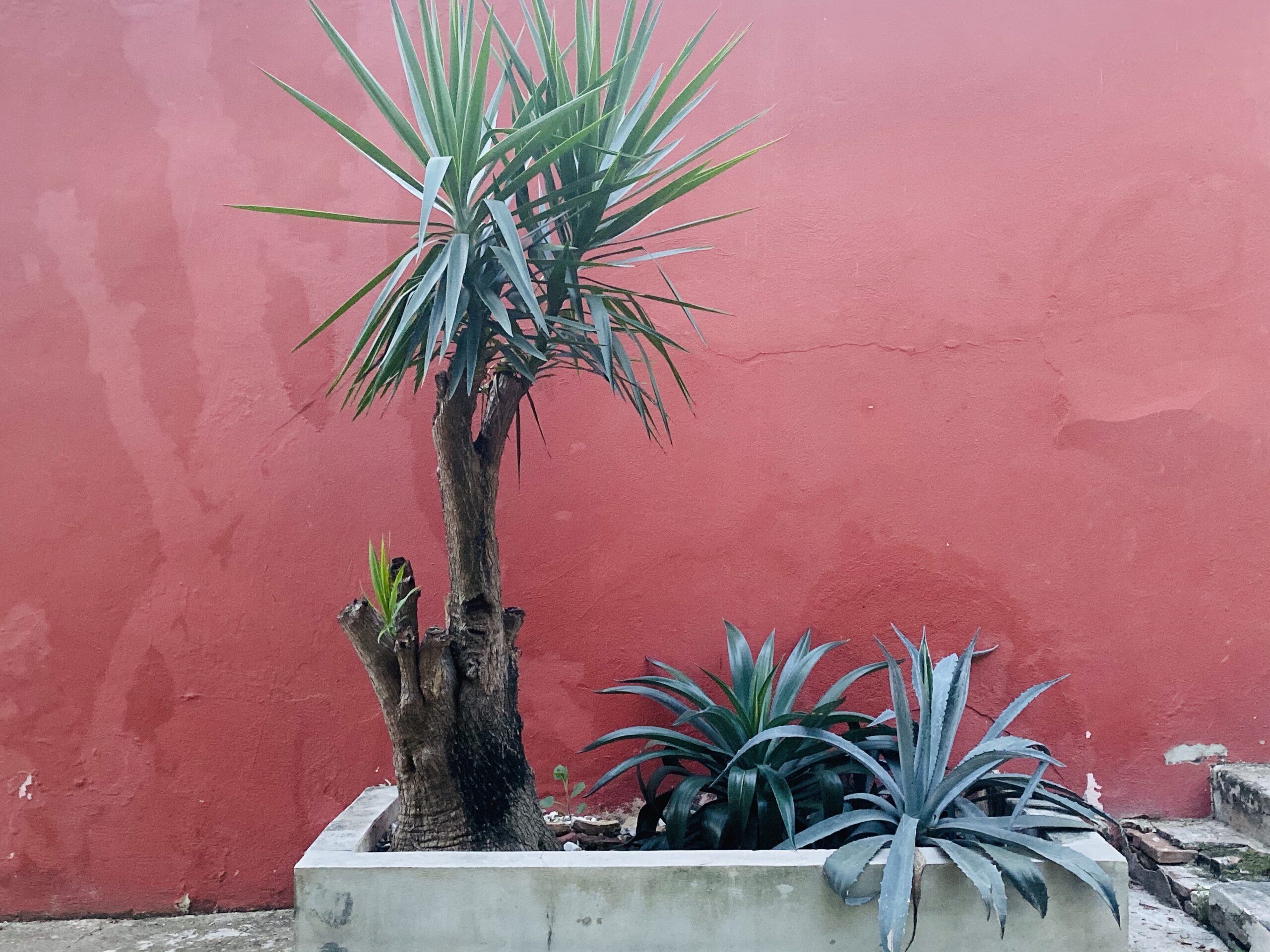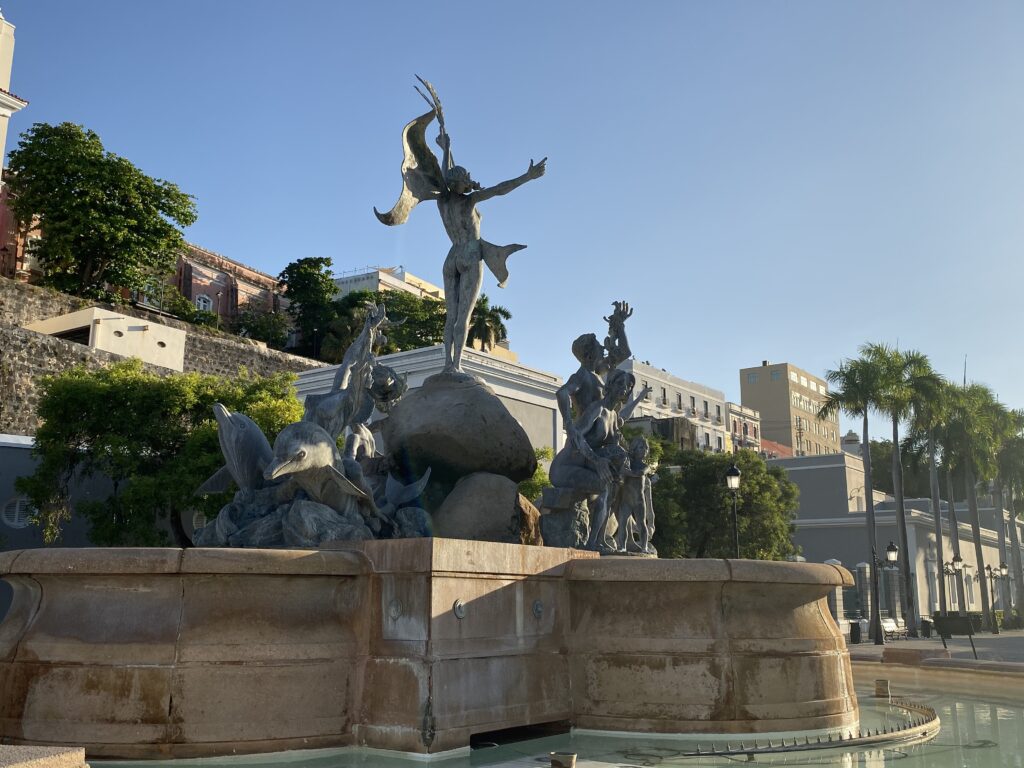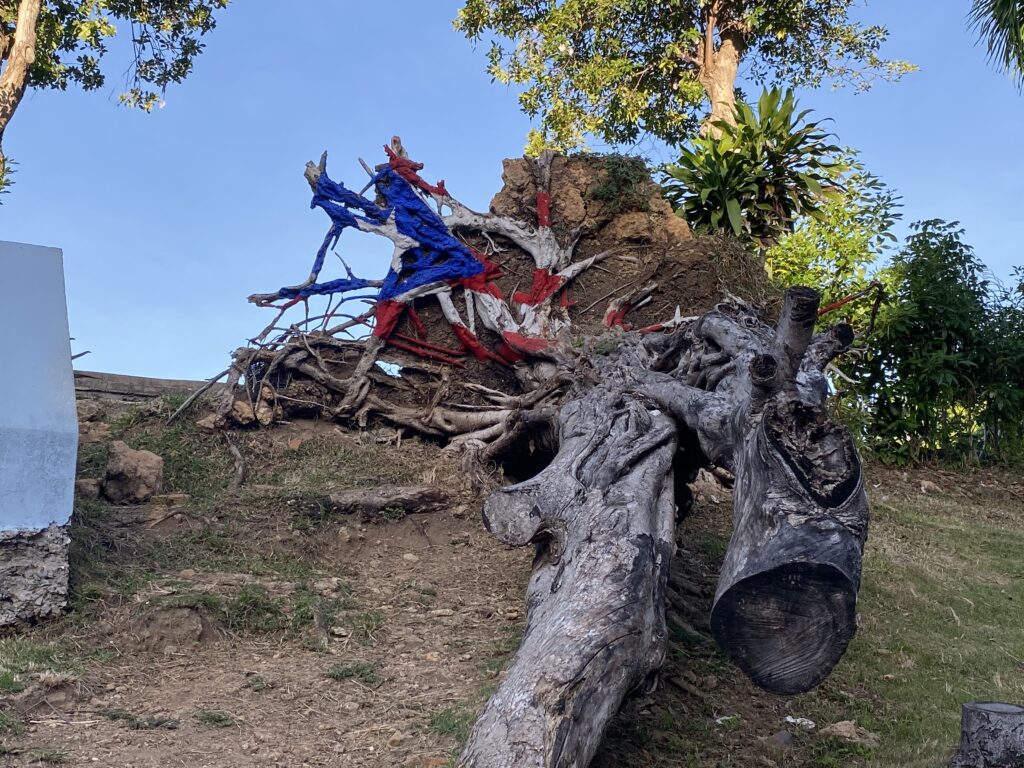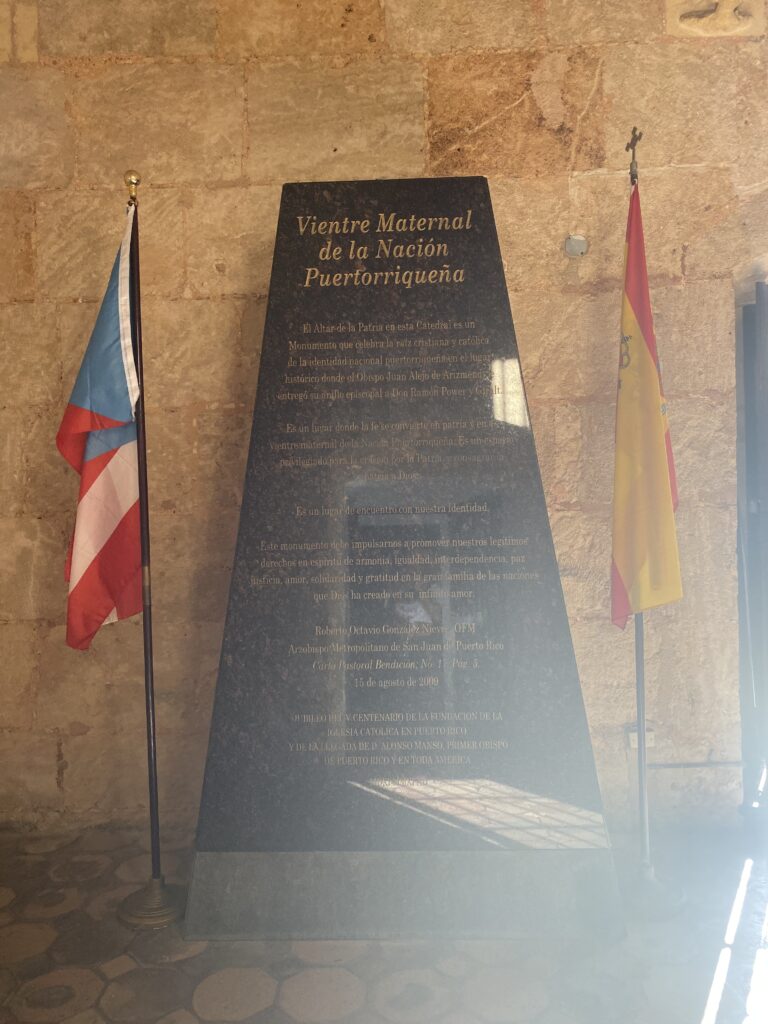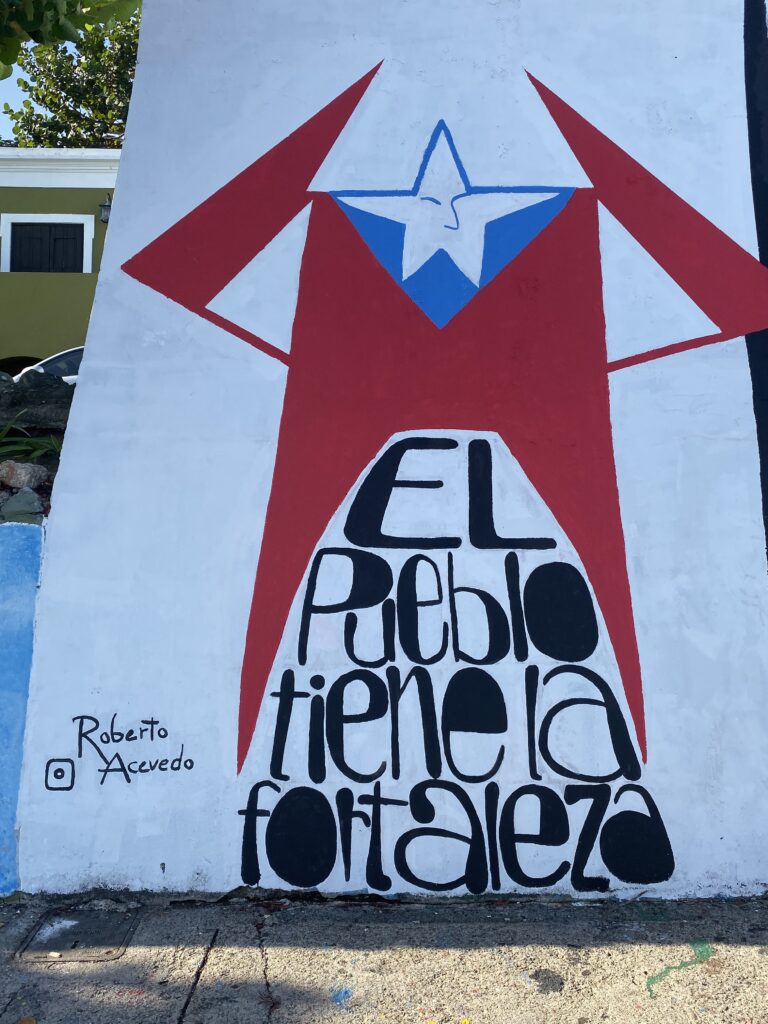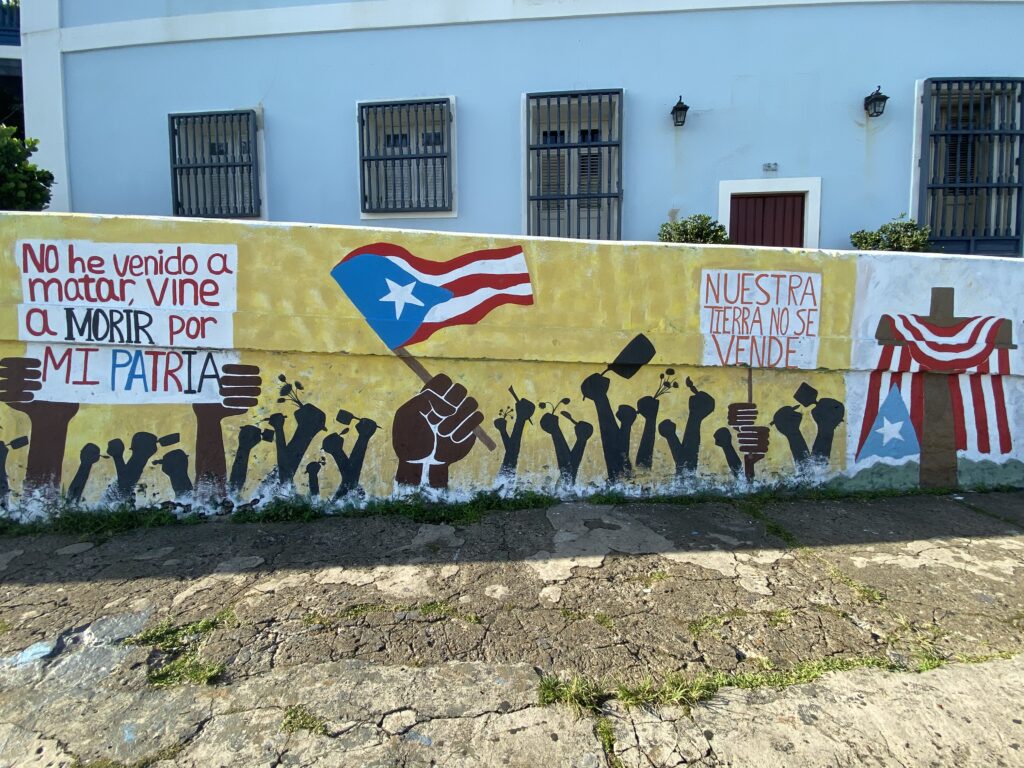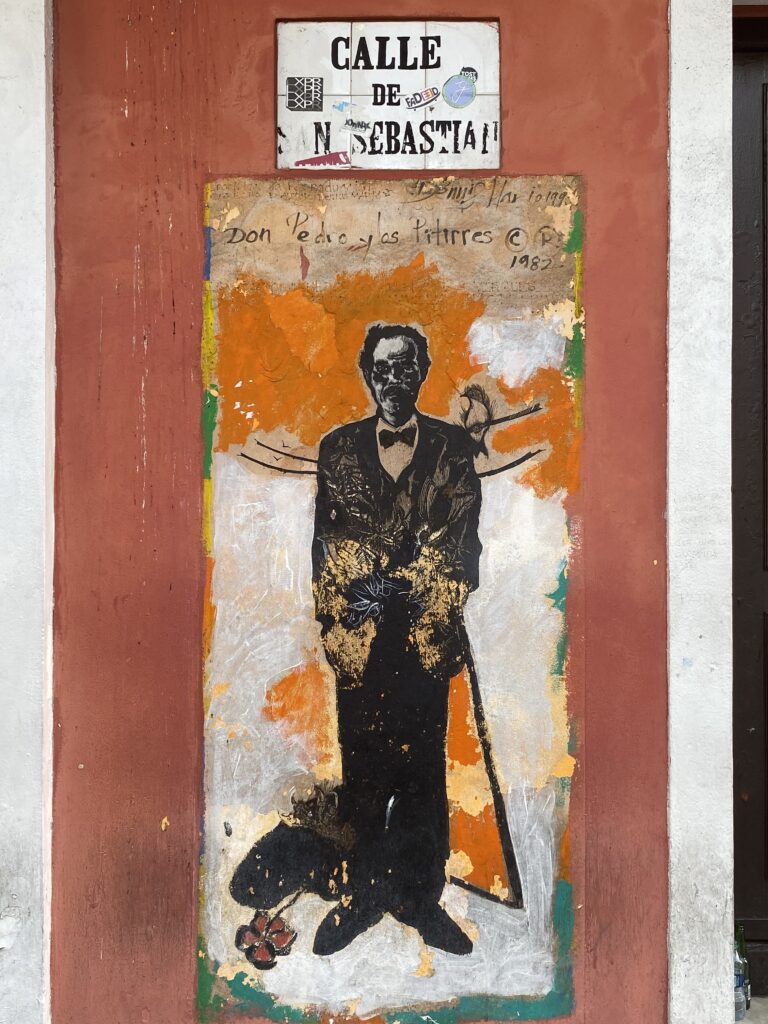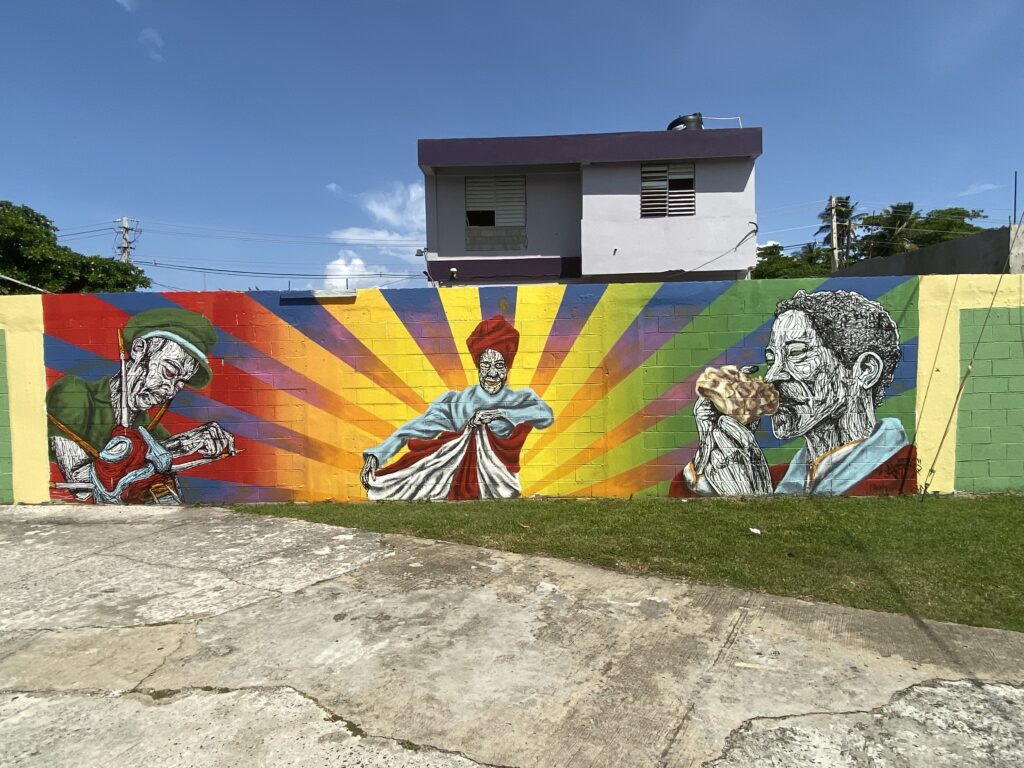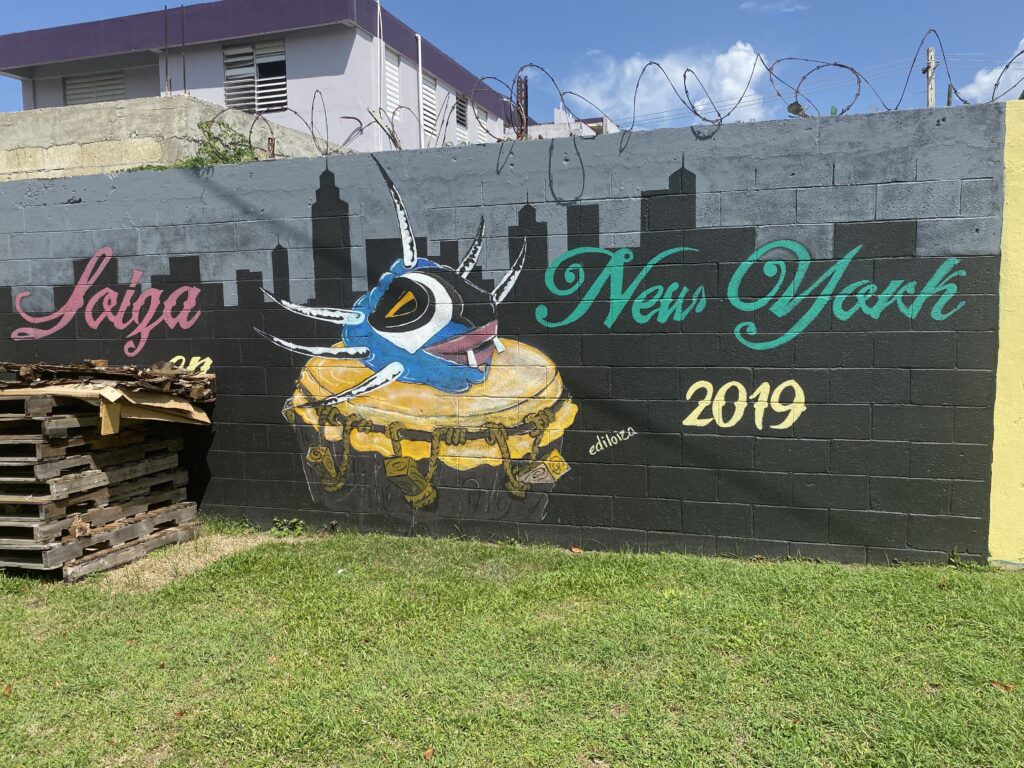(Originally written October 2019)
Two days before my trip began, one of the tours that I had booked emailed me to cancel – I was apparently the only person that signed up for it. I had spent a few minutes being sad because I convinced myself at the time that “this was one of the main reasons I wanted to go,” (gotta stop lying to myself – it was a perk, not a motivation). I was 2/2 for cancelled tours. When I decided to breathe and then find a Plan B, I was able to find a similar Afro-Caribbean cultural tour. “…I’m a solo traveler; would that be an issue for a tour on Sunday?” I asked the host. It was not, and I could get picked up from the apartment. Awesome!
I felt re-energized as I awoke Sunday rising. I am an early riser, so I decided to spend the rousing hours perusing the streets of Old San Juan. I had downloaded an app called GPSmyCity, in which I could create a personalized walking tour and it had an audio guide that would read you information about the historic sites. At some point, I decided it was a waste of my $5 and I just aimlessly wandered wherever I felt like going.
I put on some yoga pants and tank – it couldn’t be that hot at 7am, right? Lawd, I was wrong.

The streets were effortlessly quiet – the hustle of the bars and events from the night before had settled into deep sleeps and lounge-y vibes. A few city workers cleaned up the streets of the glass bottles and trash. Couplets of bicyclists rode past me. I found my way to the Raíces Fountain in Paseo de la Princesa. The water jets were turned off, but it was still nice to see. It was on an edge of town where the tides beat against the side of the pathways. Boats speckled the waters just off the coast. Walking along, I ended up passing by La Muralla, the City Wall. Its construction began in 1539 and was finished in 1782. From this vantage point, I started to realize how the OSJ neighborhood was almost completely wrapped by a wall. Interesting. Next, Puerta de San Juan got checked off of my to-do list. It’s the city gate, a wooden structure built in the late 1700s. Its rust color was aesthetically beautiful against the thick, sandstone blocks. A few meters away, I stumbled across La Rogativa, a bronze statue commemorating an event in 1797 where the local islanders “fought off” British troops.
Today’s tour guide planned on picking me up a few minutes before 10am. It was 8:15. I picked up my pace as I headed closer towards the apartment. As I headed back, I stopped into Catedral de San Juan Bautista, the second oldest church in the Western Hemisphere and oldest one in the U.S., and it contains the tomb of Ponce de León. I believe the first church is in the Dominican Republic. I had passed by several times – because I was a little lost at some point, and I wasn’t sure if I could just waltz in… but the doors were open.
Hmm, let me just go check out this street real quick. There was a main avenue that I had come down several times when coming into OSJ, that had some murals. It was close to El Morro, which was close to me, so I strode on over in the direction of the ocean (let’s say I was Northbound, haha). Found ‘em! I took in the art and also read a plaque about the little community below the wall, La Perla.
As I headed back up a hill, I saw a woman coming up the walkway from the shanty-looking community. “Your hair is beautiful,” she said in Spanish. “Thank you!” I replied in English. Her face changed as she realized I wasn’t Puerto Rican. We spoke briefly and she warned me not to walk up the hill from 11am-4pm. Apparently, the angle of the sun made it unbearable. “We call it Fool’s Road,” because it gets so hot. “We brown people get sun spots, too! Be careful!” “Oh, I will,” I laughed, “That’s why I’m out here so early.” We bid each other a good day and I made it back to the apartment just in time to take a shower, have some tea on one of the apartment balconies, change clothes and refill my water bottle.
Derek, the tour host, called and told me he’d pick me up first. Once again, I waited outside in the plaza until he arrived. As we headed to the actual meetup spot listed in the tour itinerary, to pick up a few other travelers, we began talking about the history of the island. We passed La Perla and he explained that it was looked at as the “ghetto” of the neighborhood. “All the Black people that built this town lived down there.” There were no grand, protective walls like the ones that surrounded the rest of Old San Juan. We spoke about art, my adventures thus far, and my pre-trip research I did about the island and espiritismo.
We picked up three women – two that also worked in education and were attending a conference, and another solo traveler who I later found out worked in human rights. We drove along the coast until we reached Loiza, which has the highest concentration of Afro-Puerto Ricans/African descendants on the entire island, and is said to be named after a female Taino Cacique (chief).



It was a beautiful, relatively untouched town with thick groves of trees and single-story homes sprinkled across the acres. “Runaway slaves settled this area. The area was so thick with trees that they couldn’t be found; but the Spanish knew the town existed.” Derek explained to us. The knowledge and awareness of Loiza was so profound that the Spanish government recognized it as a town in 1719. We were informed about the deep-rooted connection to Africa that thrived in the area, mainly through the arts, especially music. Most of the ancestors can be traced back to Benin, the Congo, and other Yoruba tribes – hence the creation and practices such as Santería and Brujería.
Much to my appeasement, gentrification became a topic of conversation. “Families have been here for generations; so much so that a lot of people don’t have deeds for their property, it was simply passed down and everyone respected and acknowledge who ‘owned’ what.” As we drove down the highway, we could get glimpses of the pristine beaches through the palm trees and natural growth. “Poverty can be a state of mind – people here don’t have much and think they are poor, but you can clearly see the resources… People have been finding Taíno and African artifacts in their yards.” Apparently, developers have been taking land since there are no deeds for the locals to prove ownership of their land. “Can’t you imagine beachfront high-rises here?” Yes, we all agreed, but it would destroy the essence of the area.
We pulled up to the kioskos. “We’ll order food and come back in about an hour,” we were told. A man came out and we ordered fish. His actual stand had been damaged by Hurricane Maria, so he cooked and served food out of his home. We continued on and came to a baseball arena – its outer walls filled with murals from local artists. Next, we stopped at artist, Samuel Lind’s home/gallery, where we learned about the vejigante mask. Then, we checked out at a port along the Río Grande de Loíza. Before the construction of the bridge, the cars crossed on top of a pulley.
We ventured into a small, 17th century church, San Patricio in the town square where slaves had been auctioned for generations. Church had just ended and we were welcomed inside. We noticed that Lazarus was the main figure at the head of the church, not Jesus…


